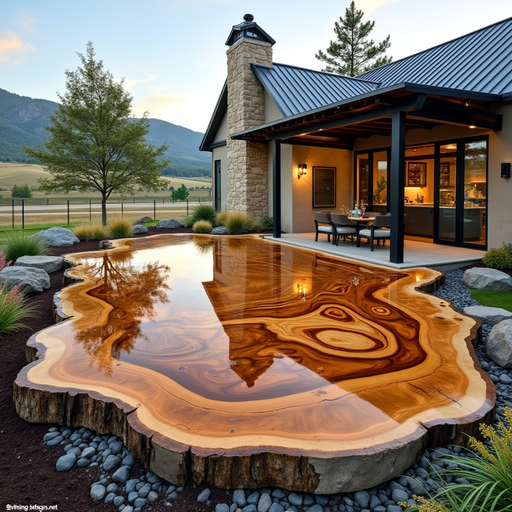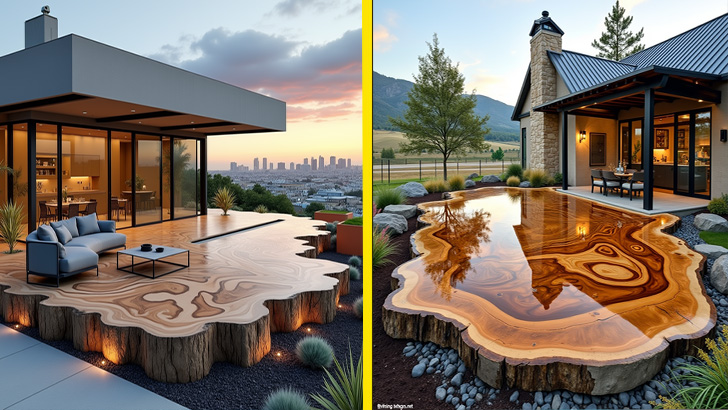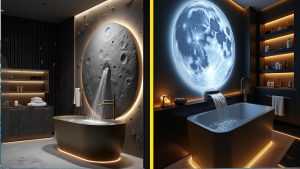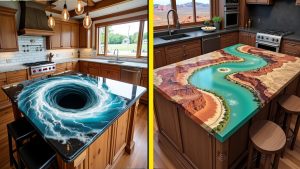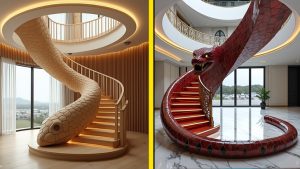1. Introduction to Live Edge Wood Patios
Live edge wood patios have become a sensational trend in outdoor design, capturing the attention of homeowners, designers, and DIY enthusiasts across the globe. The raw, untamed beauty of live edge wood brings an organic and luxurious appeal to any patio, making it a perfect fusion of nature and architecture. But what exactly is live edge wood, and why is it suddenly everywhere?
In essence, live edge wood refers to slabs or planks of wood that retain the natural edge of the tree, often including the bark or an approximation of the original shape of the trunk. Instead of being cut and shaped into perfectly straight, uniform boards, live edge wood preserves the curves, textures, and natural imperfections of the tree. This creates a visual aesthetic that’s not only rustic and authentic but also entirely unique.
Imagine walking out to your backyard and seeing a polished wood slab patio table, its surface shimmering under a UV-resistant coat, and its edge flowing like a winding river. Each twist and turn in the wood tells a story—of growth rings, weathering, and time. That’s the magic of live edge wood. It doesn’t just look beautiful; it connects you to nature.
In an era where outdoor living spaces are becoming an extension of the home, incorporating live edge wood into patios enhances the environment with warmth, texture, and character. Whether you’re planning a full-scale backyard makeover or looking to add a statement piece, live edge wood patios offer limitless opportunities for personalization and charm.
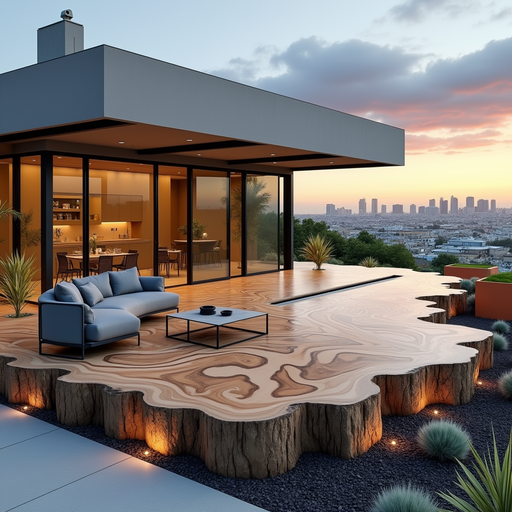
2. The Allure of Live Edge Wood
So why is live edge wood suddenly the go-to material for luxury outdoor designs? The answer lies in its unparalleled visual appeal and its deeply rooted connection to nature. Unlike machine-cut lumber, live edge wood embraces the unpredictable. Each slab is like a fingerprint—no two are alike.
What draws people to this design style is its authenticity. In a world filled with synthetic materials and mass-produced furniture, live edge wood stands as a symbol of craftsmanship and individuality. It’s the perfect contradiction: both rugged and refined, primal and polished.
Beyond aesthetics, there’s also an emotional element to live edge wood. Wood in itself has a calming effect on the mind. The natural grain, knots, and imperfections all tell a story. Some slabs may be hundreds of years old, and when they’re incorporated into a patio design, they bring that history and soul into the present moment.
Let’s not forget the tactile experience. Running your hand along a live edge surface isn’t the same as touching laminate or composite wood. You feel the dips, the grooves, and sometimes even the preserved bark. It’s raw. It’s real. And it creates a sensory connection to the outdoors that artificial materials simply can’t match.
From sleek and modern outdoor lounges to cozy rustic retreats, live edge wood adapts to almost any aesthetic. When matched with complementary elements like stone, metal, or greenery, it adds a grounded, organic layer to the overall design. Whether you’re going for a coastal, mountain, or urban look, live edge wood helps you stay rooted—literally and figuratively—in the beauty of nature.
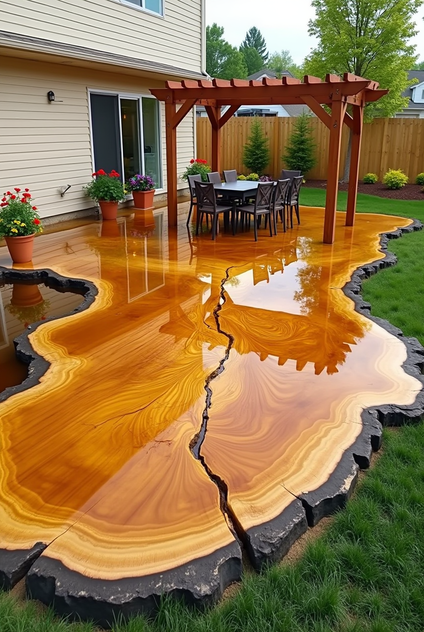
3. Design Elements of Live Edge Wood Patios
Natural Contours and Shapes
The standout feature of live edge wood is its organic, flowing edges. Unlike conventional timber that’s milled to geometric perfection, live edge wood preserves the irregularity and movement of the tree it came from. These natural contours are what give each piece its artistic flair.
Think about it—every curve, dip, and line is a direct reflection of how that particular tree grew over the years. Maybe it grew around a rock, or maybe its trunk was split by lightning. These elements are frozen in time within the wood. When used in patios, they create a sense of fluidity, breaking the boxy monotony of standard architectural lines.
These organic edges are more than just decorative. They contribute to the visual dynamics of the patio space. Instead of a static, symmetrical layout, you get a space that feels alive and in motion. It can guide the eye naturally across the space, drawing attention to key focal points like a fire pit, water feature, or garden.
Live edge wood is also incredibly versatile. It can be used for a variety of patio elements—benches, tables, counters, bar tops, steps, and even pergola beams. By maintaining the natural shape of the tree, designers can create pieces that feel custom and bespoke, because they truly are.
One great tip: when incorporating live edge wood, allow the natural edge to face outward or toward areas where it will be most visible and appreciated. It’s not just a detail—it’s the star of the show.
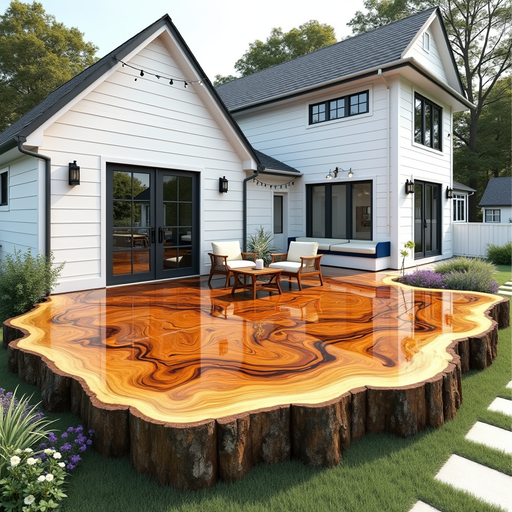
Material Selection: Choosing the Right Wood
Not all woods are created equal, especially when it comes to withstanding the elements in an outdoor setting. For live edge wood patios, selecting the right type of wood is crucial—not only for longevity but also for achieving the desired aesthetic.
Hardwoods are the gold standard for live edge outdoor use. Some of the best options include:
-
Black Walnut – Deep brown hues, elegant grain patterns, high durability.
-
White Oak – Resistant to rot and moisture, classic and neutral in color.
-
Teak – Naturally oily, making it incredibly weather-resistant and long-lasting.
-
Cedar – Lightweight, insect-resistant, and has a rich reddish hue.
-
Acacia – Dense and durable, with attractive grain and water resistance.
Each wood has its pros and cons. For instance, teak is a fantastic option for wet climates but can be expensive. Cedar is affordable and smells amazing, but may require more frequent sealing. Think about your local weather, intended use, and maintenance preferences when making your choice.
You should also consider whether the wood will be kiln-dried or air-dried. Kiln-dried wood is more stable and less prone to warping but may lack some of the rustic character that air-dried wood retains. Air-dried wood may retain more natural oils and colors, which are sometimes lost during kiln-drying.
Pro tip: Always opt for sustainably harvested or reclaimed wood when possible. This not only ensures you’re doing your part for the planet, but reclaimed wood also tends to have more character and history than freshly milled timber.
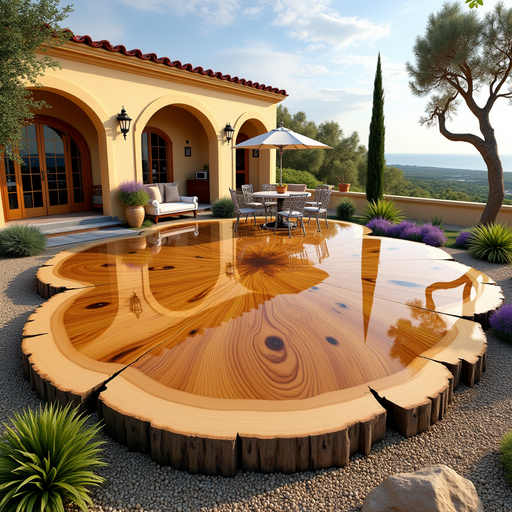
Finishing Touches: Enhancing Durability and Aesthetics
Live edge wood may be beautiful in its raw form, but to survive the outdoor environment and retain its charm, it needs proper finishing. This is where the magic happens—where raw becomes refined.
There are several options for finishing live edge wood:
-
Epoxy Resin Coating – Creates a high-gloss, glass-like finish that’s waterproof and incredibly durable. Perfect for tables and countertops.
-
Penetrating Oils – Such as tung oil or Danish oil. They soak into the wood, enhancing its natural color and grain without creating a glossy surface.
-
Exterior Polyurethane – Offers UV protection and a sturdy layer of defense against moisture and scratches.
-
Stains and Tints – Can alter the color of the wood to match your overall design scheme while still allowing the grain to show through.
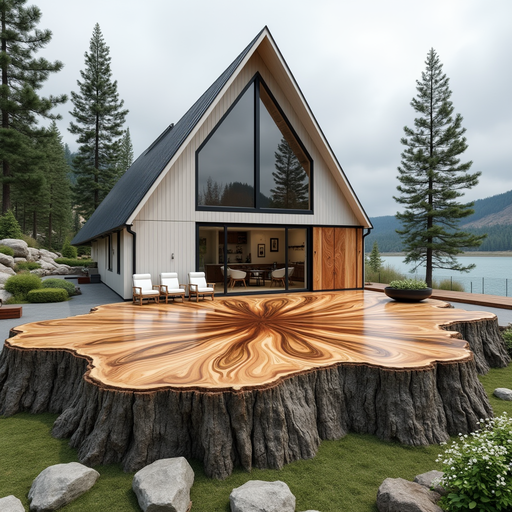
It’s important to also seal the live edge itself, as this area is often more porous and prone to cracking if left untreated. Sanding is key—especially along the edge. Use fine grit to smooth out the texture while preserving its natural shape.
Maintenance is also part of the finishing equation. Outdoor wood surfaces should be re-sealed or oiled annually, depending on the climate and usage. This keeps them looking fresh and prevents damage from UV rays, rain, and temperature changes.
One often overlooked detail is the underside of live edge furniture or decking. Yes, even the parts you don’t see need protection. Applying a sealer underneath prevents moisture from getting trapped, which can lead to warping or rot.
